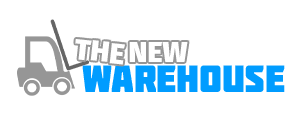
598: Cutting Transportation Costs with Paccurate
Kevin chats with James Malley, co-founder and CEO of Paccurate, live from ProMat 2025 at the Paccurate booth. Known for its cartonization technology and growing ecosystem of integration partners, Paccurate is helping shippers solve one of the biggest hidden problems in logistics: packaging inefficiency. What started as a simple algorithm has evolved into a comprehensive packing intelligence platform that reduces dimensional weight costs, enhances sustainability, and enhances the end-consumer experience. In this episode, James unpacks their recent partnerships, transportation cost savings, and why bad packaging has become a brand risk.
Partnerships that Eliminate “Phase Two-itis”
For tech solutions to truly scale, they have to be easy to integrate. That’s where partnerships come in.
“Partnerships are really everything,” James says, noting that integration delays have long held back adoption. “The biggest friction point with any API-driven product is obviously integration… once we started partnering with best-in-class WMS providers, then you can just say, ‘Just turn it on and measure it.’”
Paccurate’s latest partnerships include Kardex, SVT Robotics, Logiwa, and Packsize. Each adds unique synergy. For Kardex, the value lies in connecting cartonization to automated storage and retrieval (AS/RS) systems. “What happens right after the goods come out of the AutoStore? We need to figure out how to pack it. If I can bring Paccurate in at the same time… now you’re lowering transportation costs without trying too hard.”
By becoming part of a “balanced breakfast” of warehouse automation, Paccurate turns what was once a “phase two” afterthought into a frontline enabler of efficiency.
From Pack Station to Parcel: Real Transportation Cost Savings
While smarter packing improves labor and material usage, the real payoff is downstream. “Transportation cost savings are like, I don’t know, 70% of the savings of doing something like what we have,” James explains.
The platform removes void fill and air from boxes, optimizing every shipment for maximum efficiency. While smaller brands have seen reductions of up to 20% in transportation costs, James notes that even a 4% drop at scale yields substantial financial returns. On average, customers save about 6% compared to older cartonization systems.
And the benefits compound. “Doing advanced cartonization like this will save you pretty much the same amount of money in total as an AMR system, with none of the risk,” James says. For cost-conscious shippers, it’s an immediate ROI win that doesn’t require the complexity of full-scale automation.
When a Bad Box Becomes a Brand Crisis
It’s not just logistics teams paying attention—CEOs are picking up the red phone, too. “You’d be surprised how many cartonization emergencies there are,” James laughs. All it takes is one viral TikTok post showing a poorly packed box to trigger executive action.
That urgency is only growing. “Gen Z is the first generation that will actually make changes to their buying behavior if they perceive a brand to be wasteful,” he says. Unlike Millennials, who might just grumble, Gen Z consumers act by not buying again. That makes smart packaging not just a cost saver, but a reputational safeguard.
The convergence of sustainability, cost reduction, and consumer expectations is pushing packaging out of the shadows. What used to be “just the cost of doing business” is now a competitive differentiator.
Key Takeaways
- Enables up to 20% transportation cost savings for smaller brands; 6% average savings across customers.
- Functions as a low-risk alternative to costly automation, offering an AMR-level return on investment (ROI) without the need for additional infrastructure.
- Helps eliminate project delays with pre-integrated partnerships across WMS and automation providers.
- Supports sustainability goals by reducing packaging waste and dimensional weight fees.
- Gen Z consumers are more likely to abandon brands over perceived packaging waste, making efficient cartonization a brand imperative.
Listen to the episode below and leave your thoughts in the comments.
Guest Information
For more information on Paccurate, click here.
To connect with James on LinkedIn, click here.
For more information about reducing transportation costs, check out the podcasts below.
MHI Industry Group Series: Warehouse Sustainability Through Automation
579: The Journey to Sustainable Warehousing, Insights from ProMat 2025

Cartonization and the Rise of the Packing Control System » The New Warehouse
[…] 598: Cutting Transportation Costs with Paccurate […]